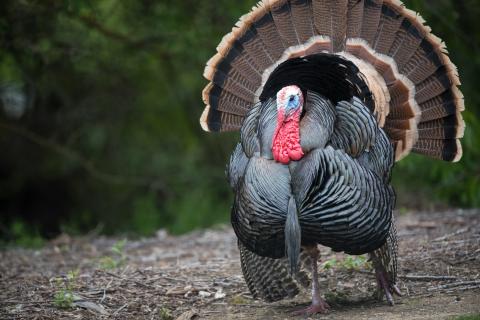Talking Wild Turkey
By: Steve Roark
Volunteer, Cumberland Gap National Historical Park
Turkeys have been in the Americas for a very long time. Fossil records show they were around 11 million years ago and were likely distributed continuously from middle latitudes of North America to northern South America during the Pleistocene Era. The Aztec Indians were the first to domesticate the bird, and it became an important staple to their diet. The Navajo gave up on keeping them away from their scanty desert corn crops, and instead began feeding the turkeys and fence them in. The invading turkeys unwittingly provided a dependable source of protein and ornamental feathers.
Indians of the northeast did not bother to domesticate the turkey, but instead let the birds fatten on their own with abundant wild chestnuts and acorns, and learned to effectively hunt them. The wild birds were "called up" by imitating their calls, and then grabbed by a child hiding behind some logs or in a pit, or shot with a bow and arrow or blow gun.
In 1519, Cortez and his fellow Spanish Conquistadors found the Aztecs raising turkeys around their homes. They took the domesticated birds back to Europe where they became a popular meat producing livestock.
In 1620, the Pilgrims disembarked from the Mayflower and began to search for sources of food. They met up with Northeastern Native Americans, who shared their knowledge of hunting the large fowl. Meat of the wild turkey became an important food source and helped the greenhorn settlers survive and make a go of it.
As pioneers pushed west and cleared forests, the turkey's habitat changed and their numbers dwindled. Their population continued to drop in the late 1700s when wild turkeys were hunted in large numbers for city markets. By the mid 1800s the Civil War brought a shortage of food and the big bird was hunted so hard that it was eliminated from nearly half of its original range. In the early 1900s only around 30,000 turkeys remained.
Around 1920 things began to improve. Millions of acres cleared for agriculture began to regenerate into woodlands as farming went down as manufacturing jobs went up. Farsighted leaders began enacting conservation laws and restocking programs began. By 1994, almost all of the forests of the eastern United States and much of the West had been restocked. Today, some 5 million turkeys roam 49 states.
- Log in to post comments
